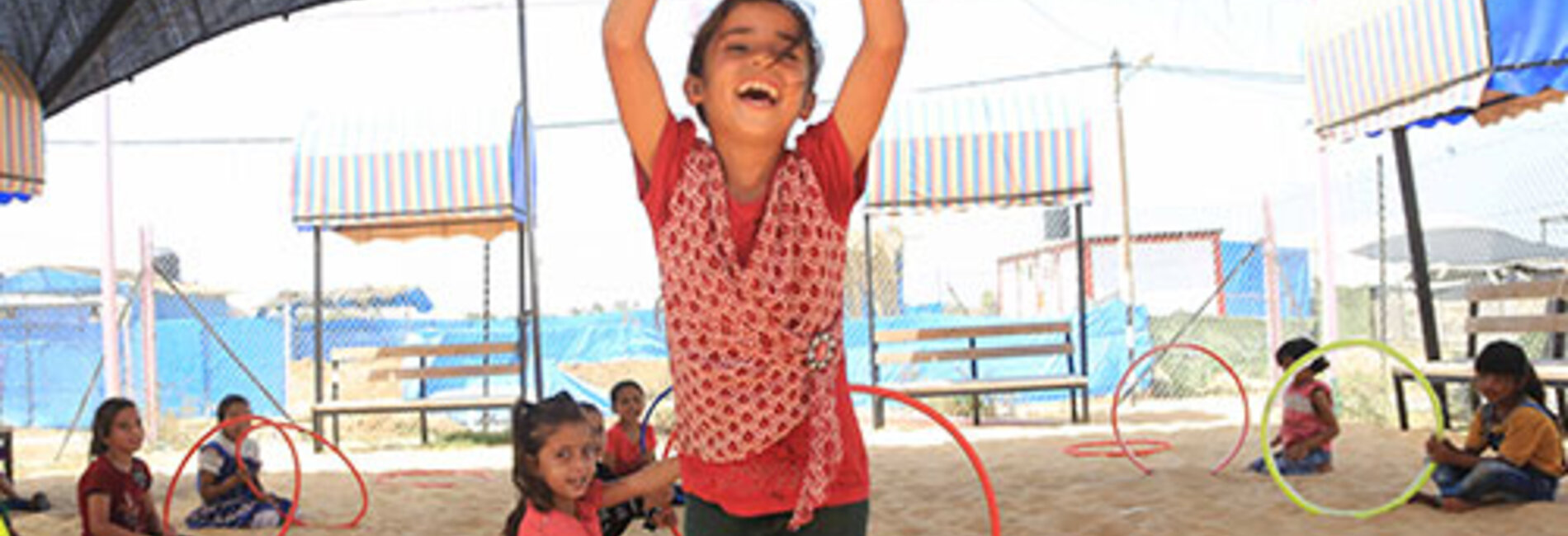Monthly Overview: August 2016
In his monthly briefing to the Security Council on 29 August, the UN Special Coordinator observed, on the occasion of the two-year anniversary of the Gaza ceasefire, that “while progress has been made on reconstructing the physical damage, sadly we are miles away from repairing the psychological damage of the conflict.” This month’s Bulletin highlights the psycho-social impact on children in Gaza, with one out of four children (225,000) still requiring psychosocial support and 33,000 needing specific case management. By end-June, over 63,008 children had been provided with psychosocial support and counselling services and 1,542 children with case management.
As part of a ‘separation policy’ to divide West Bank Palestinians from Palestinians in Gaza,[1] the Israeli authorities prohibit the passage of Palestinians into and out of Gaza, with exceptions mainly made for businesspeople and traders, medical patients and their companions, and employees of international organizations. In July there was a 15 per cent decline in exits from Gaza compared to the monthly average for the first half of 2016, with a 27 per cent decline in the number of exits for businesspeople and traders. This year has also shown a decline in the approval rate for permit applications for medical patients and their companions to travel via the Erez crossing to more advanced health facilities in the West Bank, including East Jerusalem, and in Israel.
There has also been a decline in the approval rate of permits for national staff working with international organizations in Gaza, with rejections increasing from three per cent in January to 21 per cent in June, and over one hundred permit applications denied. There are concerns that the recent Israeli indictment of two local Gaza-based employees of the United Nations Development Programme (UNDP) and World Vision International, who have been accused of diverting funds and material to Hamas, may lead to further restrictions on humanitarian space in Gaza, and negatively impact the ability of aid organizations to respond to critical needs, particularly through the national staff.
In the West Bank, following a significant decline in May and June, demolitions increased significantly in July and August. Of the structures targeted, 94 were located in vulnerable Bedouin and herding communities in Area C and demolished or confiscated on the grounds of lack of permits, which are nearly impossible to obtain. Most of the approximately 30,000 Palestinians living in such communities are at risk of forcible transfer due the coercive environment generated by Israeli policies. There is also renewed concern for the community of Susiya in the southern West Bank, where over 170 civilian structures are under threat of demolition and where the Israeli authorities abruptly ended negotiations with community representatives last month. In his monthly briefing, the UN Special Coordinator warned that “the demolition of this community would set a dangerous precedent for displacement and feed the perception that Israel aims at a de facto annexation of Area C.”
According to the UN Special Coordinator, “international funding and an uninterrupted flow of aid are a lifeline to over one million Palestinians in the Strip, who are struggling to survive within a dire humanitarian situation.” In Cairo in October 2014, donors pledged US$ 3.5 billion for Gaza: according to the World Bank, only an estimated 46 per cent had been disbursed by end-August. The 2016 Humanitarian Response Plan (HRP) for the OPT, which plans to support one in three Palestinians with some form of humanitarian assistance in 2016, is likewise severely underfunded, at 32 per cent as of mid-August. Decreased funding for the OPT HRP has reduced the humanitarian community’s ability to implement a number of critical interventions and to respond to humanitarian needs, which – given the ongoing occupation and political stalemate – remain critical. In the absence of additional pledges, organizations will be forced to scale back activities in the second half of 2016, with the impact felt across all humanitarian sectors across the OPT, but particularly in Gaza.
[1] The document “Procedure for Settlement in the Gaza Strip by Judea and Samaria Area Residents, December 2010”, which was provided to Gisha in April 2012, begins as follows: “In 2006, a decision was made to introduce a policy of separation between the Judea and Samaria Area and the Gaza Strip in light of Hamas’ rise to power in the Gaza Strip. The policy currently in effect is aimed at reducing travel between the areas”.










